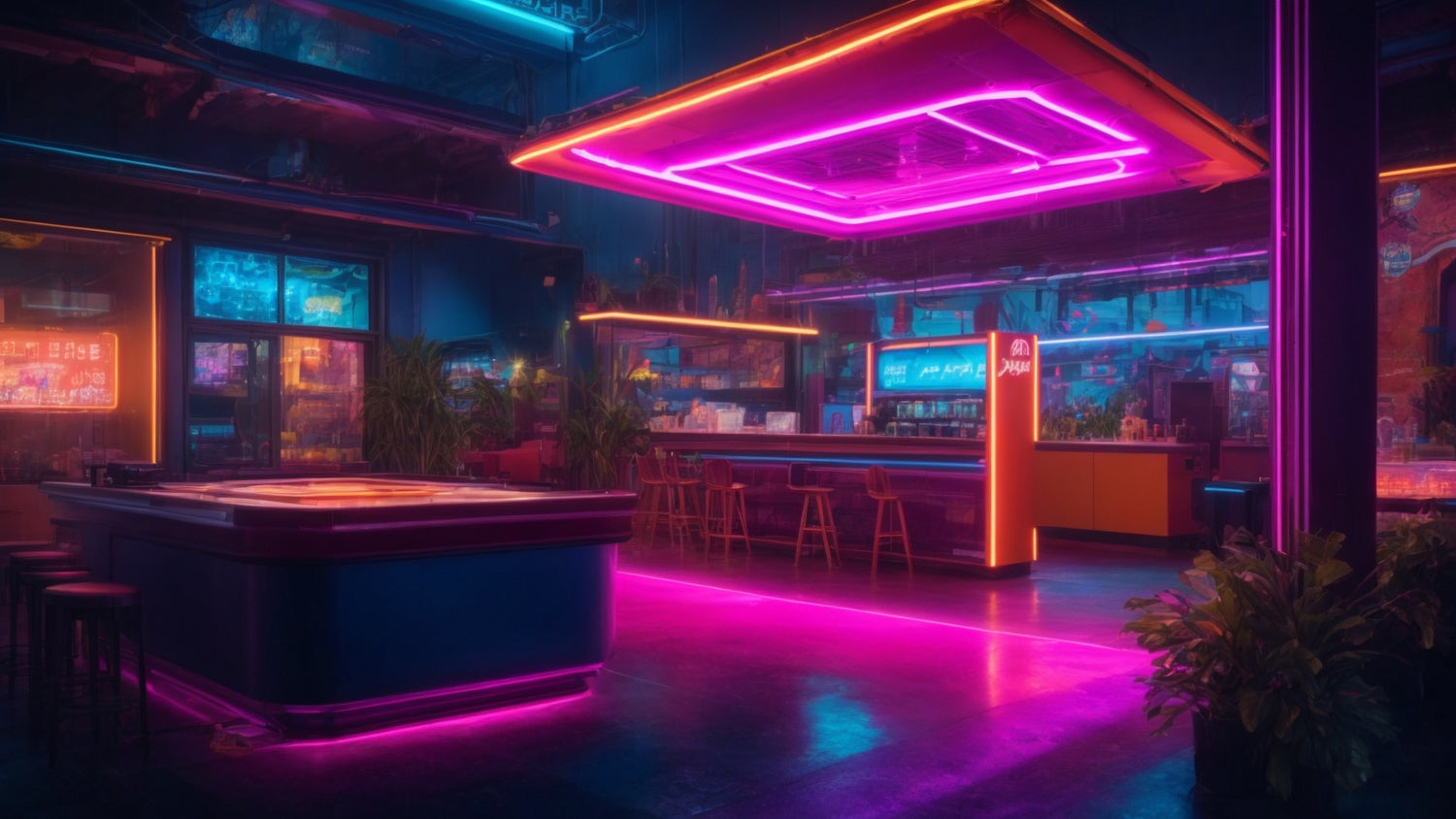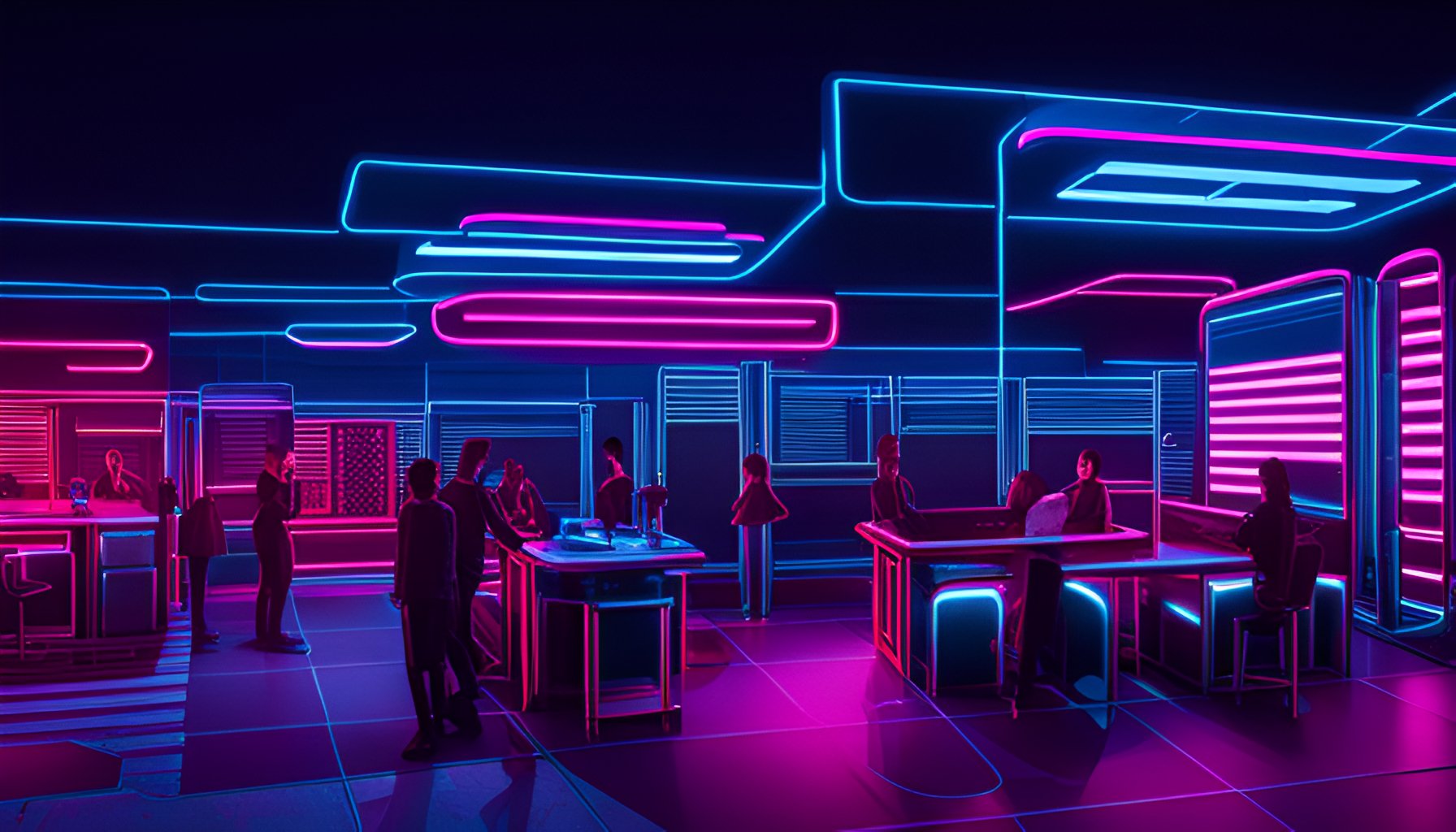The Rise of Neon in Video Game Aesthetics
Video games have come a long way since their humble beginnings. From the simple, pixelated graphics of the early days to the stunningly realistic visuals of today, video game aesthetics have continuously evolved. One aesthetic element that has become increasingly popular and iconic in recent years is neon. Glowing pixels have found their way into countless games, adding a vibrant and futuristic appeal to virtual worlds.
The Allure of Neon
Neon has a unique ability to captivate our attention. Its bright and vibrant colors create an otherworldly atmosphere that instantly draws us in. In video games, this effect is magnified as players are transported into fantastical and futuristic settings. Whether it's the neon-lit streets of a cyberpunk city or the glowing power-ups in a retro arcade game, neon adds an element of excitement and wonder to the gaming experience.
Enhancing the Gameplay
Neon not only enhances the visual appeal of video games but also serves a practical purpose. In many games, neon is used to highlight important elements such as objectives, collectibles, or enemy targets. The contrast between the vibrant neon and the dark or muted backgrounds helps guide players' attention and improves gameplay clarity. It creates a visual hierarchy that ensures crucial information is easily distinguishable, making the gaming experience more intuitive and enjoyable.
Creating Atmosphere and Immersion
Neon is often used to establish a specific atmosphere and immerse players in the game world. For example, in futuristic or cyberpunk-themed games, neon lighting is ubiquitous, contributing to the gritty and dystopian ambiance. It creates a sense of a bustling metropolis or a mysterious underground hideout. On the other hand, in retro-inspired games, neon invokes nostalgia for the arcade era, instantly transporting players back to the '80s.
Evolution of Neon in Gaming
Neon in video games has evolved over time, reflecting advancements in technology and the changing tastes of gamers. Early games relied on simple, blocky neon graphics due to technical limitations. As technology improved, so did the complexity and realism of neon effects. Modern games now feature stunningly detailed neon lighting, with dynamic reflections and realistic glow effects. This evolution has allowed game developers to create more immersive and visually striking experiences.
Neon as an Artistic Choice
Beyond its practical applications, neon has also become an artistic choice in video game design. Game developers use neon to evoke specific emotions and themes. The pulsating glow of neon can create feelings of excitement, danger, or mystery. It can also symbolize the clash between technology and humanity or serve as a visual representation of a dystopian future. By strategically incorporating neon into their games, developers can convey their artistic vision and create a unique and memorable experience for players.
Neon and Sound Design
Neon in video games doesn't just stop at visuals. It often goes hand in hand with sound design to create a fully immersive experience. The neon-lit streets of a futuristic city are often accompanied by electronic music, enhancing the overall atmosphere and transporting players into the game's world. The combination of glowing pixels and a carefully crafted audio landscape can create a multisensory experience that lingers long after the game is turned off.
Neon as a Marketing Tool
The visual impact of neon in video games extends beyond the gaming experience itself. Game developers and publishers often use neon imagery in their marketing materials to grab attention and build anticipation. Neon-lit game covers, trailers, and promotional artwork are eye-catching and instantly recognizable, helping to create a strong brand identity and attract potential players.
Neon and Player Engagement
Neon has a unique ability to engage players and make a game memorable. The allure of neon visuals often leads to players sharing screenshots and videos of their favorite neon-lit moments, generating buzz and interest among the gaming community. Social media platforms become flooded with neon-infused gaming content, creating a sense of community and enthusiasm around these visually striking experiences.
Future Possibilities
As technology continues to advance, the possibilities for neon in video game aesthetics are limitless. With the rise of virtual reality (VR) and augmented reality (AR), neon can be even more immersive and interactive. Imagine exploring a neon-lit virtual world in VR, where the vibrant colors surround you and react to your movements. The future of neon in gaming holds exciting prospects for pushing the boundaries of visual design and player experiences.
Conclusion
Neon has become an integral part of video game aesthetics, capturing the imagination of players and enhancing the overall gaming experience. Its ability to create atmosphere, guide gameplay, evoke emotions, and serve as a marketing tool makes it a powerful element in the hands of game developers. As technology continues to advance, we can only imagine the breathtaking neon landscapes that will grace our screens in the future, immersing us in even more visually stunning and captivating gaming worlds.



Leave a comment
This site is protected by hCaptcha and the hCaptcha Privacy Policy and Terms of Service apply.